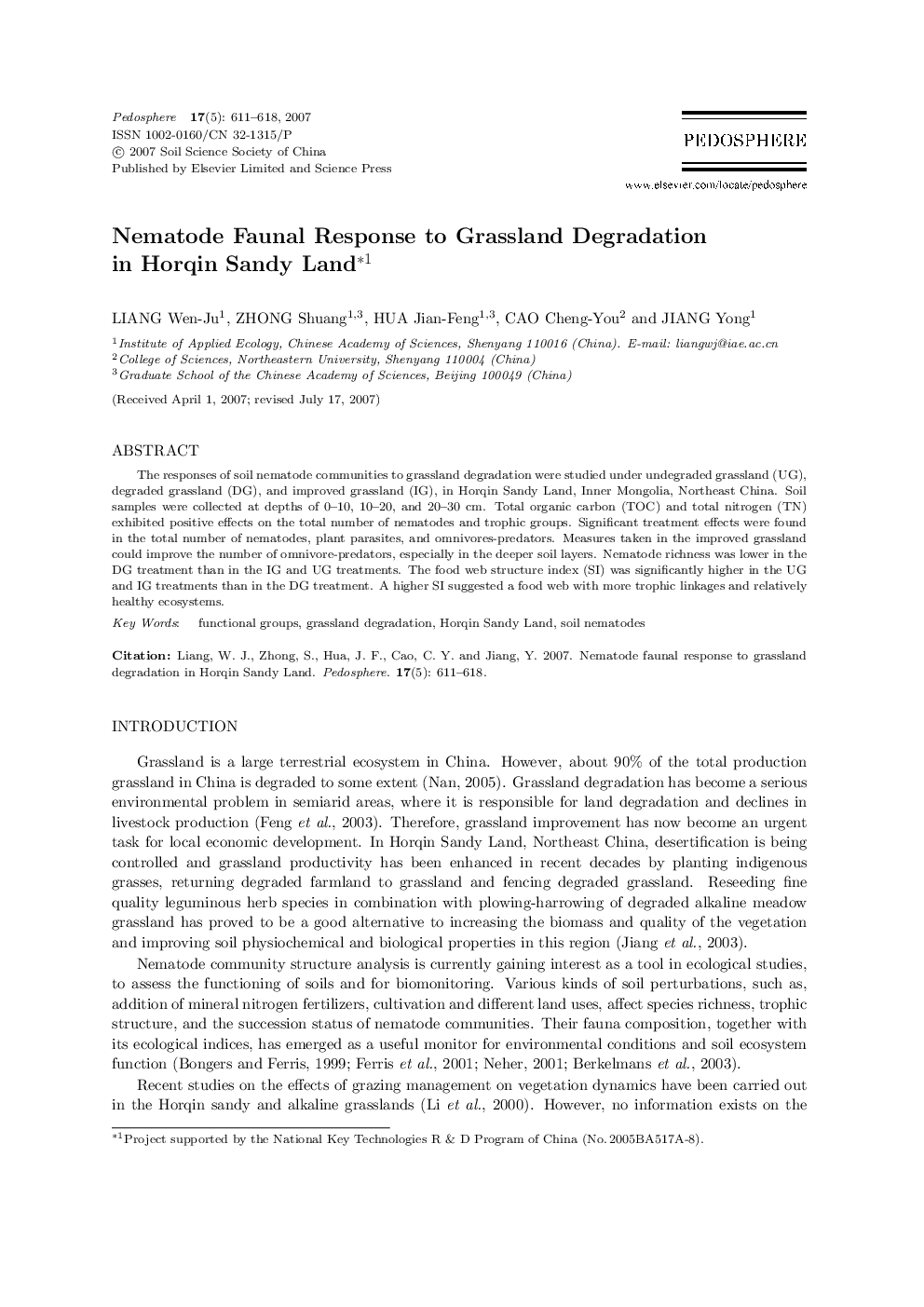| Article ID | Journal | Published Year | Pages | File Type |
|---|---|---|---|---|
| 4582113 | Pedosphere | 2007 | 8 Pages |
The responses of soil nematode communities to grassland degradation were studied under undegraded grassland (UG), degraded grassland (DG), and improved grassland (IG), in Horqin Sandy Land, Inner Mongolia, Northeast China. Soil samples were collected at depths of 0–10, 10–20, and 20–30 cm. Total organic carbon (TOC) and total nitrogen (TN) exhibited positive effects on the total number of nematodes and trophic groups. Significant treatment effects were found in the total number of nematodes, plant parasites, and omnivores-predators. Measures taken in the improved grassland could improve the number of omnivore-predators, especially in the deeper soil layers. Nematode richness was lower in the DG treatment than in the IG and UG treatments. The food web structure index (SI) was Significantly higher in the UG and IG treatments than in the DG treatment. A higher SI suggested a food web with more trophic linkages and relatively healthy ecosystems.
